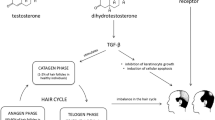Summary
From the stutdy of cosmetic books, formularies, reports in the literature, and two surveys conducted, the following observations are made:
-
1.
Vegetable products have played an important part in the history of hair preparations.
-
2.
The use of plant products in today’s commercial market is limited.
-
3.
Essential oils are important in all types of hair preparations, although the use of synthetic fragrances is increasing.
-
4.
From a commercial standpoint, almost no vegetable dyes are used in hair coloring.
-
5.
Although vegetable oils are used in hair dressings, mineral oils are preferred.
-
6.
The majority of shampoos are synthetic surface-acting agents, but some vegetable oils are used in the manufacture of soap shampoos.
-
7.
Plant powders are used in the formulation of dry shampoos, but this product is not popular.
-
8.
Gums and mucilages are still widely used in hair set lotions.
-
9.
Medicated products contain few plant constituents of any importance.
-
10.
Plant products are comnionly used as perfume fixers and suspending or thickening agents.
-
11.
No new plant products, except perhapsSophora spp. for baldness, appear to have any promise in future hair and scalp formulations.
Similar content being viewed by others
Literature Cited
Chilson, F. 1938. Modern Cosmetics, ed. 2. Drug and Cosmetic Industry, New York.
DeNavarre, M. G. 1962. The Chemistry and Manufacture of Cosmetics. Vol. I, II, ed. 2. Van Nostrand, Princeton, New Jersey.
Harry, R. G. 1962. The Principles and Practice of Modern Cosmetics, Vol. I, II. Chemical Publishing, New York.
Sagrin, E. 1957. Cosmetics Science and Technology. Interscience, New York.
Thomssen, E. G. 1947. Modern Cosmetics. ed. 3. Drug and Cosmetic Industry, New York.
Alpers, W. C., and Kennedy, E. J. 1914. The Era Formulary. D. O. Haynes and Co., New York.
American Pharmaceutical Assoc. 1943. The Pharmaceutical Recipe Book. ed. 3. The American Pharmaceutical Assoc., Washington.
Bennett, H. 1933. The Chemical Formulary. Vol. I-III. Van Nostrand, New York.
The Chemist and Druggist. 1953. Pharmaceutical Formulas. Vol. I, II, ed. 12. The Chemist and Druggist, London.
Fenner, B. 1964. Twentieth Century Formulary. B. Fenner, Westfield, New York.
Goodman, H. 1936. Cosmetic Dermatology. McGraw Hill, New York.
Hopkins, A. 1913. The Scientific American Cyclopedia of Formulas. Munn and Co. Inc., New York.
Keithler, W. R. 1956. The Formulation of Cosmetics and Cosmetic Specialties. Drug arid Cosmetic Industry, New York.
Lerner, M. R., and Lerner, A. B. 1960. Dermatologic Medications, ed. 2. The Year Book Publishers Inc., Chicago.
Sloaue, T. O. 1938. Henley’s Twentieth Century Book of Formulas, Processes and Trade Secrets. The Norman W. Henley Publishing Co., New York.
Poucher, W. A. 1960. Perfumes Cosmetics and Soaps. Vol. I-III, ed. 7. Van Nostrand, Princeton, New Jersey.
Greenborg, L. A., and Lester, D. 1954. Handbook of Cosmetic Materials. Interscience, New York.
Hill, A. F. 1952. Economie Botany, ed. 2. McGraw Hill, New York.
Youngken, H. W. 1948. A Textbook of Pliarinacognosy. ed. 6. Blakiston, Philadelphia.
Barr, M. 1959. Hair dressings. Apothecary71:27, 72.
Finnemore, H. 1926. The Essential Oils. Van Nostrand, New York.
Fritzsche Brothers, Inc. 1944. Perfumer’s Handbook and Catalog. Fritzsche Brothers, Inc., New York.
Guenther, E. 1948. The Essential Oils. Vol. I-VT. Van Nostrand, New York.
Stotler, L. 1961. Hair coloring. Givaudanian. Mar. 3–7.
Goldenberg, R. L. 1960. Hair and the colouring of hair. Soap Perfumery Cosmetics33:513–528.
Hibbott, H. W. 1963. Handbook of Cosmetic Science. MacMillan, New York.
Bell, C. W. 1899. Tangiveira. Arnold. 35–36.
Popinoe, W. 1920. Manual of Tropical and Subtropical Fruits. MacMillan. 20–21.
Stotler, L. 1964. The hair preparations market. Givaudanian. Mar. 3–6.
Anonymous. 1960. Manufacturing Chemist. Mar. 124.
Utsunomiya, S., Nishuira, T., and Haguvara, Y. 1960. Studies on the Hair Restorative Action of Swertinogen, an Extract from Swertia japonica Makins. Acta Medica30: 172–183.
Musashi, T. Effect of Sophora Radix Extract on Hair Growth. Presented at the International Federation of Societies of Cosmetic Chemists, June 25, 1964 (unpublished).
Walker, G. T. 1962. Baldness. Drug and Cosmetic Industry. Jan. 33.
Anonymous. 1958. Dandruff and what modern research has done about it. Breck Gold Box. 3–4. 17.
Anonymous. 1962. Dandruff and its treatment. Chain Store. Feb. 106.
Lubowe, I. T. 1961. Diseases of the Scalp and Hair. Soap Perfumery and Cosmetics. Nov. 1028.
Culpepper. Complete Herbal. David McKay Co., Philadelphia.
Blackburn. 1808. A New Medicinal Herbal. R. Parke, Bookseller, Stateness, and Bendees.
Quisumbing, E. 1951. Medicinal Plants of tho Philippines. Technical Bulletin #16, Manila Bureau of Printing.
Author information
Authors and Affiliations
Additional information
Supported by a grant from John H. Breck Inc. Paper prepared as part of Harvard Summer School course “Plants and human affairs.”
Rights and permissions
About this article
Cite this article
Roia, F.C. The use of plants in hair and scalp preparations. Econ Bot 20, 17–30 (1966). https://doi.org/10.1007/BF02861923
Received:
Issue Date:
DOI: https://doi.org/10.1007/BF02861923




